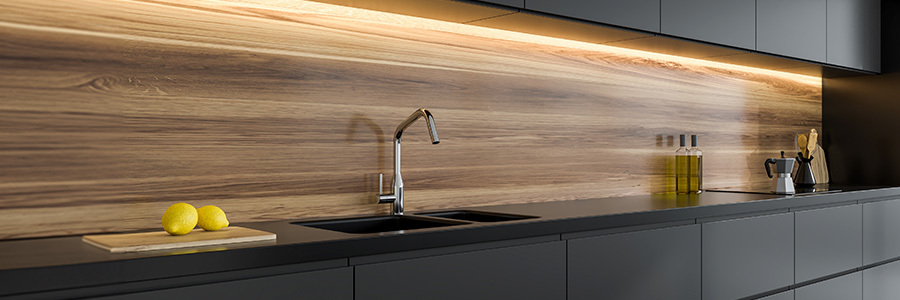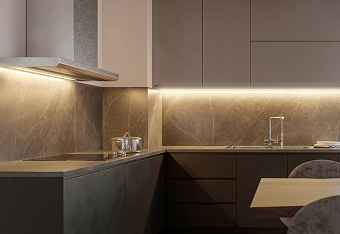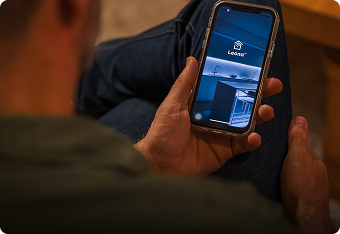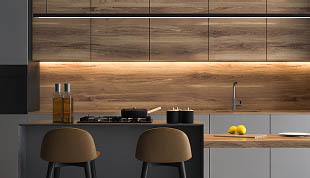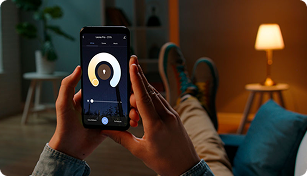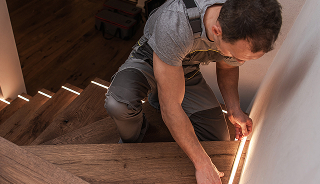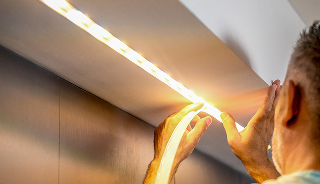Outdoor LED Strip Lights as Kitchen Lighting? Smart Move!
When it comes to brightening patios or backyards, it’s only natural to think about surrounding conditions: rain, humidity, heat, debris, and the occasional splash of water. Outdoor lighting often calls for specific products and a little extra planning, especially around safety and installation.
Indoor lighting can feel more straightforward. We usually focus on things like how bright we want the room to be or whether we want the fixtures to stand out or blend in. Most of the time, it’s a balance between design and functionality without too many external changes.
But here’s what we don’t always think about: Some rooms inside the house need the same care as outdoor spaces. Think about bathrooms, where hot showers fill the room with steam. Or attics, where ventilation is limited and dust and moisture easily build up over time.
Put simply, when standard lights don’t cut it inside, it's smart to use lighting with a little added protection, just like we would outside. That’s why, when it comes to mudrooms, kitchens, bathrooms, and the like, the lights you’d trust on your porch or pergola might be the best fit indoors, too.
In this article, we’ll show you exactly why and where it makes sense to bring outdoor lighting inside, and how some types of lights are built to handle these conditions safely and reliably.
IP65 LED Lights: What They Are and Why They Matter
There’s usually a way to tell where LED products are designed to go. You just need to check the product name, the box, or the technical specs in the user’s manual. Somewhere in that information, you’ll see codes like IP20, IP65, IP67, IP68, or others. But what does this mean?
All LED products go through a process called ingress protection testing. This determines their IP rating, a label (‘IP’ followed by two numbers) that conveys how well your lighting and any installation accessories are sealed against dust, dirt, and moisture.
An IP65-rated product is more than enough for most outdoor setups. And as we’ll see, this protection isn’t just useful outside—you’ll also need it for indoor areas and specific applications where lights might face moisture, steam, poor airflow, or a lot of dust.
That’s why, even though these products are often marketed as outdoor LED strip lights, ‘wet-location strip lights’ is a term that more accurately reflects their IP65 weatherproof design and the whole range of interior and exterior environments they’re built for.
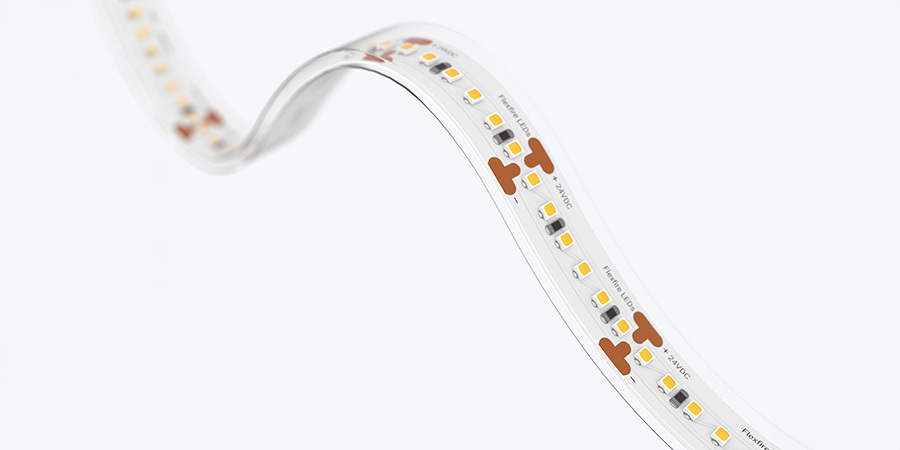
In practical terms, this means your lights come inside a silicone protective jacket, carefully engineered to handle tough conditions without affecting their color or quality. Let’s take a closer look at what IP65 offers for your installs and why it matters:
Water-Resistant LED Strip Lights
Are ‘water-resistant’ and ‘waterproof’ the same? ‘Water-resistant’ means a product can handle low-pressure water jets and light contact with moisture. ‘Waterproof,’ on the other hand, means it's made to be fully submerged in water. Your IP65 LED strip lights are not waterproof, so they should never be placed underwater.
For outdoor spaces, this means your strip lights are built to stand up to hose sprays, heavy rain, and even outdoor cleaning tools like sprayers. They’re ready for the usual weather and everyday water splashes, but not for full soaking.
That’s why places like pools, fountains, artificial ponds, and jacuzzis are not a match for IP65 lights. Even just placing them too close to these water-filled spots can be risky.
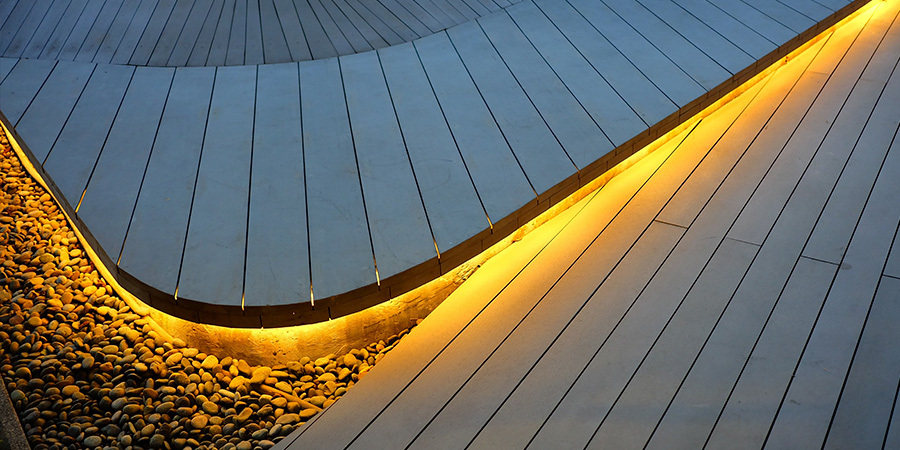
When it comes to indoor use, IP65 lights can handle the steam from a regular shower, splashes near a sink or tub, and the usual dampness in places like laundry rooms or attics, as long as they’re not getting hit directly with water.
Of course, there are places inside the house where lights might be fully covered in water, such as the bottom of a shower or in a tub. In those spots, IP65 lights just aren’t enough. You’ll need more specialized lighting for those types of applications.
Reliable Dust Protection for Your Lights
We often install our LED strips in hard-to-reach spots—tucking them inside coves or architectural niches keeps their placement discreet and the lighting soft on the eyes. But it also means dust goes unnoticed as it quietly settles in and makes itself at home right along the strip.
Over time, that debris buildup can affect how your lighting looks and performs, especially in places with moisture or grease in the air. Thankfully, the silicone protective layer on IP65-rated lights acts as a reliable shield that helps maintain their performance.
Just like dirt and sand outdoors can’t get through the silicone jacket, neither can the moisture-prone particles you’re more likely to find in tricky, damp indoor spaces. And since all of it stays on the outside of the light strip, cleaning also becomes a much simpler job.
Easier LED Lighting Maintenance and Cleaning
“How to clean LED light strips?” That’s a common question for anyone bringing this kind of lighting into their home, especially since we’re talking about a narrow ribbon lined with tiny LED light sources and circuitry rather than a classic round bulb.
As you might expect, it’s much easier to wipe down a smooth, sealed surface than to clean around components directly. While traditional LEDs may require a microfiber cloth or a soft brush, the silicone jacket on IP65 light strips makes things simpler—you can use a regular cloth.
Thanks to their water resistance, you can even use that cloth slightly damp. And if you’re dealing with difficult stains or accumulated grime, a bit of soap and rubbing alcohol on it will do the trick.
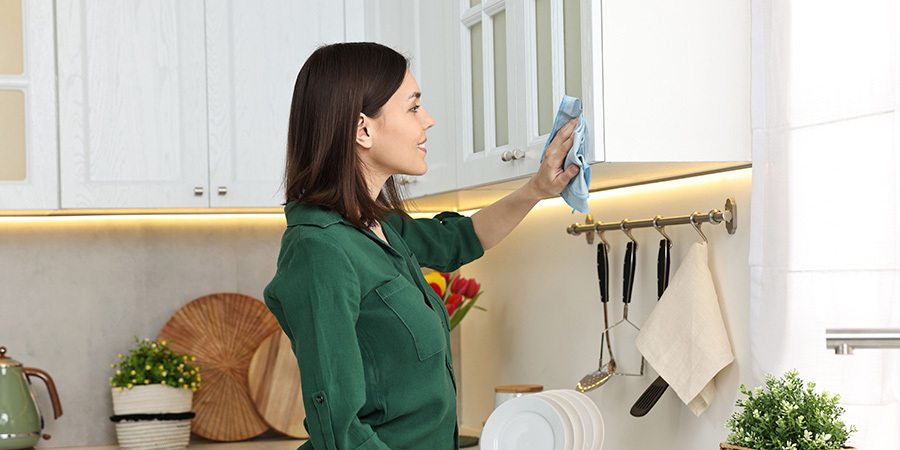
This means this ingress protection rating doesn’t just shield your lights, helping them last longer—it also makes them easier to include in a thorough cleaning routine for kitchens and bathrooms. Who would’ve thought that using outdoor LED strips indoors could streamline the way you tidy up indoor splash zones?
Wet Location LED Lighting: The Key to Great Bathrooms and Kitchens
We’ve already seen that some spots both inside and out have a lot in common, to the point where they require the same lighting. You certainly don’t want to set up a regular light in your bathroom or kitchen, only to have it stop working later or even hurt you during installation.

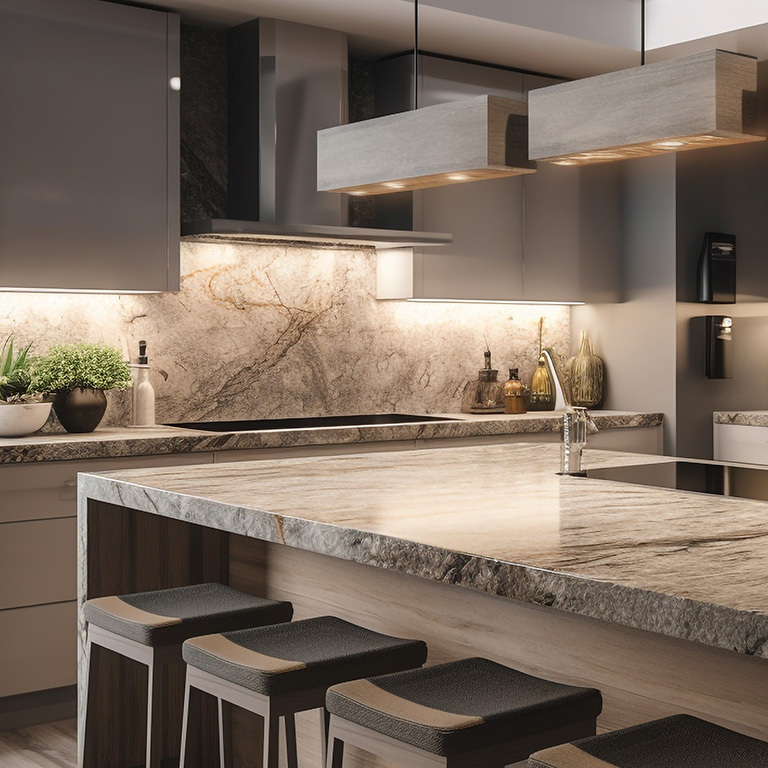
This matters even more when you realize how lighting helps define these wet locations. Whether it’s setting a soft glow while you cool off, highlighting decorative water features like mist walls, or providing the right brightness for any water-related activity, good LED lighting is key to completing their look and feel.
Thankfully, you can achieve all this with splash-proof LED strip lighting, which balances safety and durability with the style, functionality, and customization that you’re looking for. From IP65 strips with dynamic colors and adjustable white light to a simpler, mood-setting white LED strip light, the options are wide open.
With all this under your belt, let’s take a look at the sleek lighting projects where outdoor-rated lighting is the safest indoor choice for you and your home:
Kitchen Lighting
Kitchen lighting is fundamental to make your home feel complete. It needs to do more than one job: help you see clearly when you’re cooking and chopping ingredients, but also make the space feel cozy when it’s time to relax or sit down for a meal.
Plus, we shouldn’t forget the significant role lighting plays in how we see and anticipate food. And of course, the kitchen is a space used for many different purposes, often without us being fully aware of it.
Now, while most kitchen lighting doesn’t require an IP65 rating, it’s a good idea to have it in areas close to your stovetop or sink. These spots get a lot of water splashes and steam from cooking, so it’s better to be safe and keep your lights protected.
A great solution is to place a water-resistant, all-in-one LED strip with adjustable white tones under your cabinets. That way, you can use cool light when prepping meals, then tap a button to switch to warm light for dinner, making both your food and your guests look great.
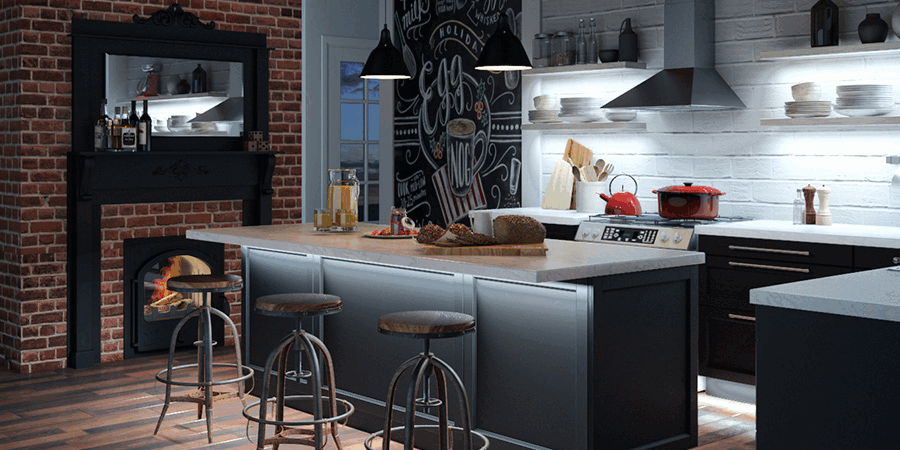
Wet Bar Lighting
Some kitchens include a wet bar, a small area with a sink, designed for serving snacks and mixing drinks during gatherings with friends and family. These bars can also show up in your basement or other parts of the house, but their setup is usually pretty similar.
Lighting in these spaces should be similar to what you would use under kitchen cabinetry. But here, it’s a great idea to opt for a splash-safe LED strip in bold hues or even a color-changing strip that won’t be ruined by water, lemon juice, or a spill from your favorite drink. This will let you create an entertaining and vibrant nightlife mood in the space.
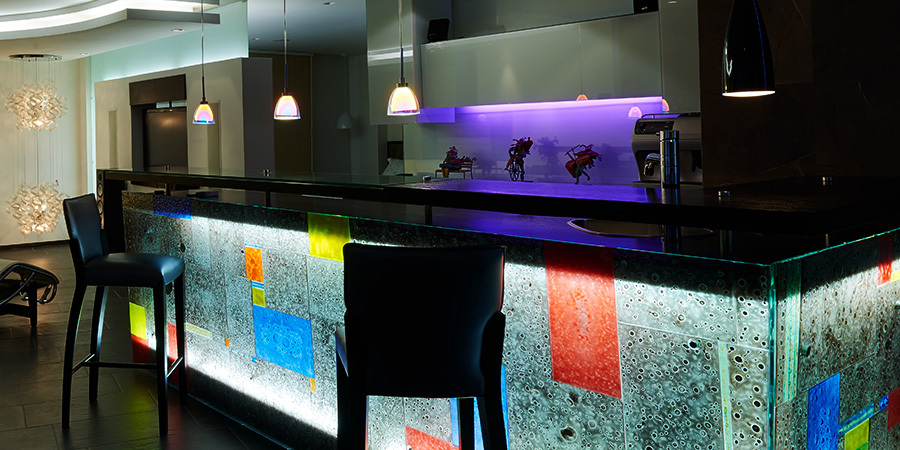
Laundry Room Lighting
In larger homes or apartments, kitchens often come with a built-in laundry area. This space needs plenty of light—so whether you're the one doing the washing or someone else is helping you out, you can be sure everything gets cleaned the right way. Bright lighting also helps with things like hand-scrubbing or opening cabinets.
That’s where IP65 protection comes in. It keeps your LED strips safe in spots like broom or mop closets, where humidity runs high. It also ensures your under-cabinet lighting stays strong and steady over an ironing board or near a utility sink, where steam and splashes are usual.
LED Bathroom Lighting
Bathrooms might just be the hardest-working rooms in our homes. In the morning, they help us wake up and get ready with care. At night, it’s the place where we wind down and relax before bed. And throughout the day, they’re ready for anyone who needs to freshen up.
For starters, any light around or under your vanity mirror should be IP65-rated to handle splashes from washing your face or hands. These lights should switch easily—cool and bright for getting ready with precision in the morning, and warm and soft for a calming glow at night.
You can also use lights to line your shower niche or highlight any cove above it. These give you clear sight for grabbing shampoo or soaps and make it safer to move around while showering. Plus, they give your bathroom a sleek, high-end look, like something out of a magazine.
In other words, your bathroom lighting should transition smoothly between tasks that require focus and the spa-like comfort you deserve. That’s why we recommend a subtle, all-around adjustable white IP65 strip that can handle everyday humidity and steam without a problem.
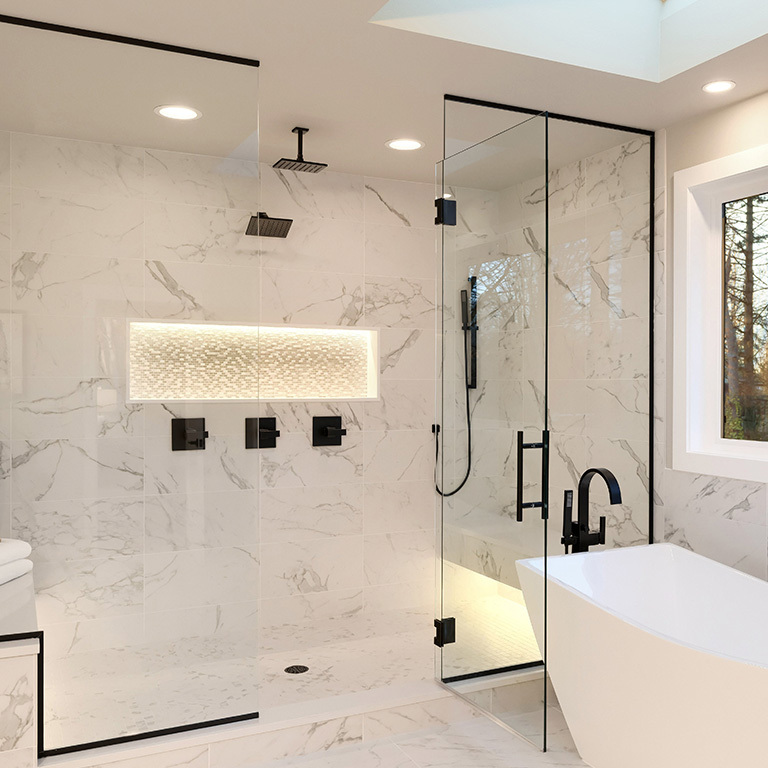
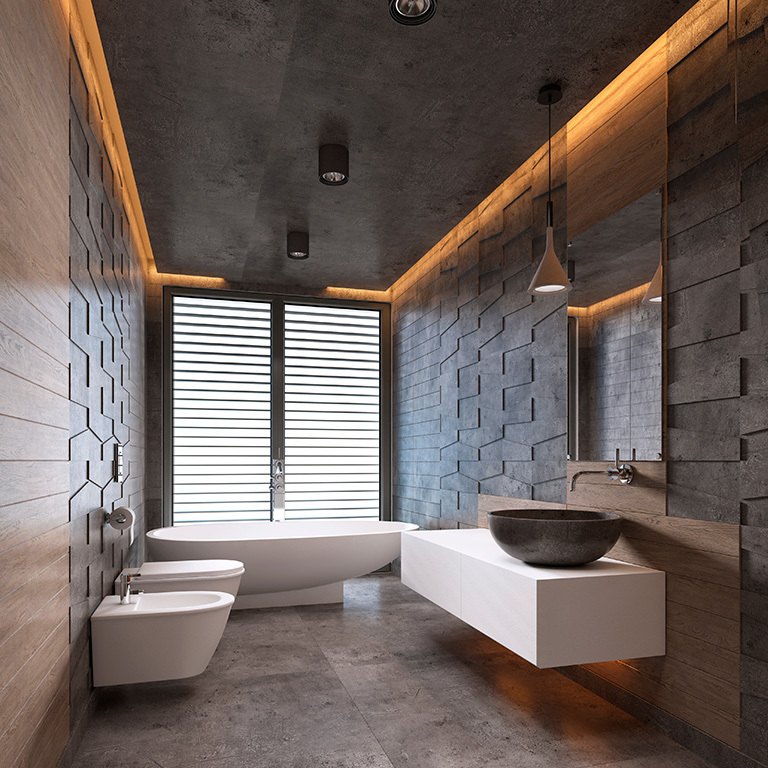
Closet Lights
In some homes, closets—whether it's just a small changing nook or a luxury walk-in—are built right next to the bathroom. If your house is older or has a tricky layout, moisture from the bathroom can be a bother and get trapped in your closet, leading to damp clothes and a musty smell.
In cases like these, or any tight spot like a cubby, cabinet, or wardrobe that doesn’t get much airflow and tends to hold in humidity or dust, IP65-rated LED strip lights are the right choice for you. They’ll hold up better over time and help keep your closet both lit and protected.
Basement Lighting
Basements are below ground level, which means they’re naturally prone to moisture. Surrounding groundwater can seep in through the walls or floor, especially if there are small cracks or the concrete is not sealed well.
Since basements don’t always have big windows—or any at all—and we don’t use them every day (especially if they’re more of a storage zone than a complementary living space), it’s easy for humidity and mold to build up. The same can happen in garages in warm climates without AC or proper ventilation.
But all of that means one thing: These areas need solid lighting. You’ll want to see what you’re digging around for, whether it’s old holiday decorations or that one tool you can’t find. Cove lighting, shelf lighting, and under-cabinet lights for workbenches can all benefit from IP65 protection in your basement.
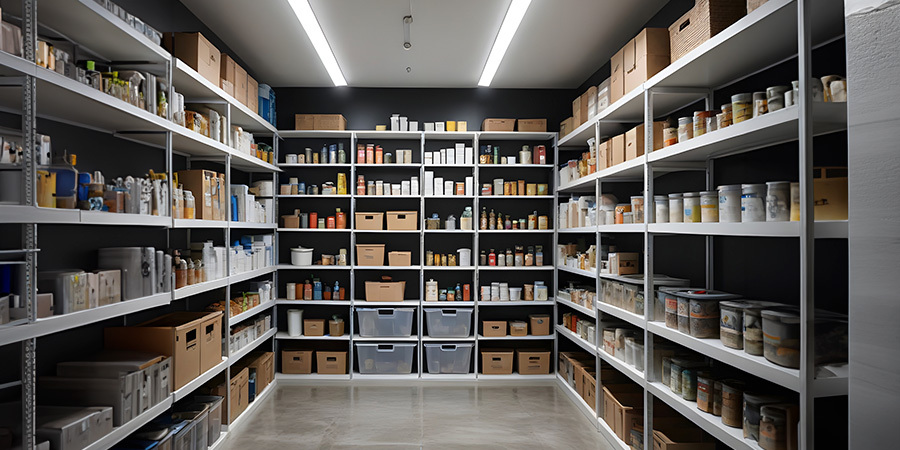
Attic Lights
Attics experience significant temperature changes and often lack good airflow. Warm air from the floors below can rise and hit cold attic surfaces, especially in winter, causing moisture to collect. And when there’s no good ventilation, that moisture gets stuck and builds up over time.
Just like garages and basements, they are often used for storage and not much else. And that means they have similar needs when it comes to lighting. Dust-resistant, IP65 LED strips are your go-to option for these tricky, low-use spots.
Mudroom Lighting
If you have a large or elegant home, chances are you've thought about the convenience of a mudroom. After all, what could be better than having a spot to leave behind muddy shoes and heavy coats before stepping into the calm and comfort of your home?
Since many of the shelves, hooks, or cubbies in this space are often planned with built-in lighting, it’s important to use IP65-rated lights here. That way, any contact with damp jackets or dripping umbrellas won’t cause issues down the line.
Shed Lights
Sheds are a true lifesaver. They give you space to store all your gardening essentials and landscaping gear that you’d rather keep out of sight, while always being within easy reach.
Technically, sheds aren’t part of the house, but they’re not exactly outdoor structures either. They’re fully enclosed, yet more exposed to the elements, especially if they’re made of wood or built in a simpler style than your main home.
Adding lighting to your shed doesn’t just make it more functional—it adds overall polish and value to your property. Whether it’s for finding tools quickly or using the space as a small workshop, especially in farm-style homes or rural builds, IP65-rated lighting is the way to go. It handles moisture, dust, and years of use ahead.
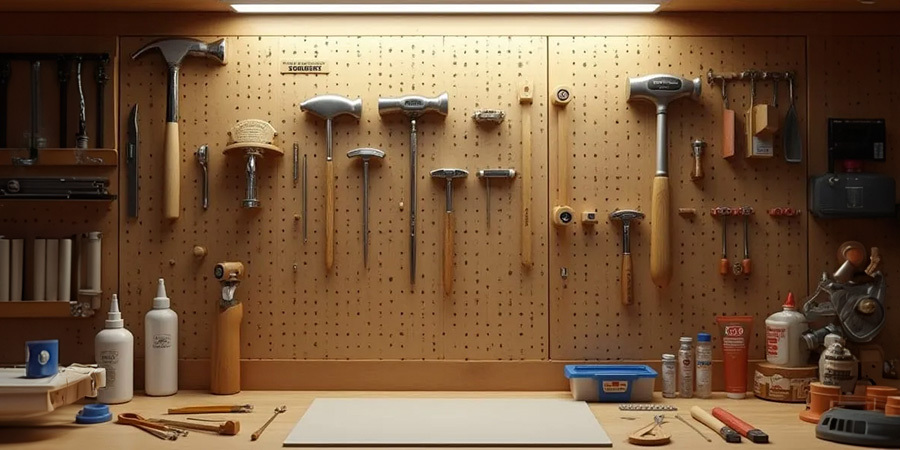
What About More Challenging Spaces? IP65 vs. IP66 and Above
You might have noticed that your home has other, more unique or hard-to-light wet locations that we didn’t discuss. That’s because IP65 lights can only guarantee a certain level of protection, and there are higher water-resistance ratings for tougher spaces.
Say your boat garage or carport is exposed to heavy, constant rain or the occasional splash of waves. In this case, IP66 or a tougher, rock-solid IP67 LED strip lighting option would be worth considering, always with guidance from a project planner or expert electrician.
So, if you want to put lights on your shower floor, inside a tub, in your pet’s bath, or in tricky places with lots of steam or direct contact with water, you’ll need higher levels of protection.
Considering Wet-Rated LED Strip Lights for Your Space?
When you're working on a lighting project in places with moisture or poor airflow, it’s always best to get help from the pros. That’s why we recommend calling an electrician or a trusted lighting expert who can walk you through everything about wet-location installs.
You can also count on us for a complete line of IP65-rated products for your outdoor spaces and indoor splash zones. Call us or drop us a message! Not even the highest humidity levels or the trickiest layouts can stop the Flexfire team from helping you bring your dream bathroom or kitchen to life.
